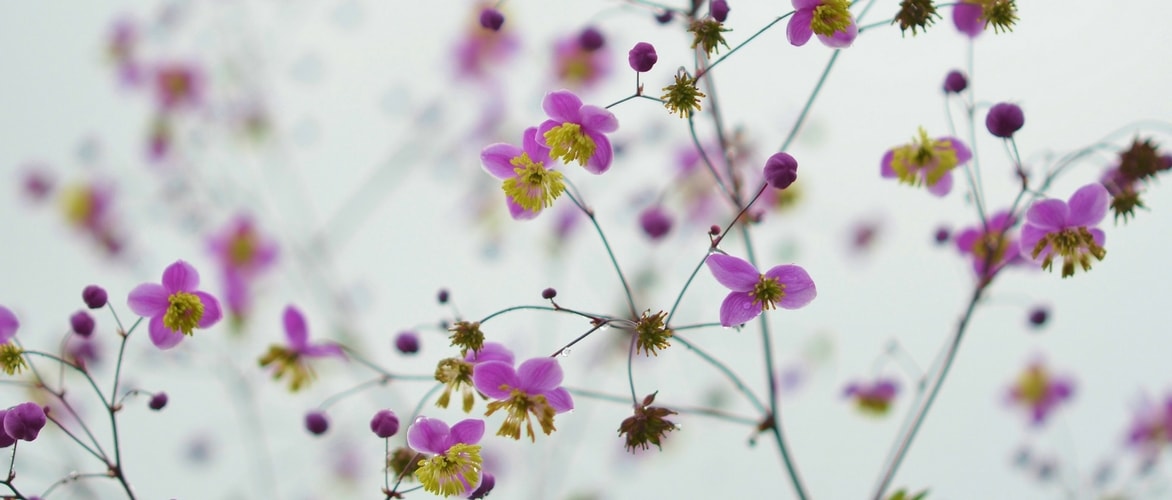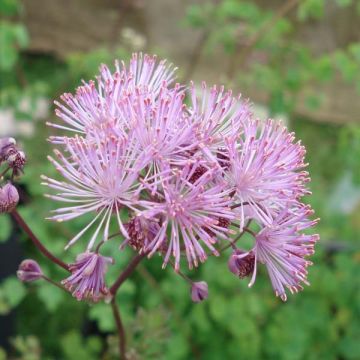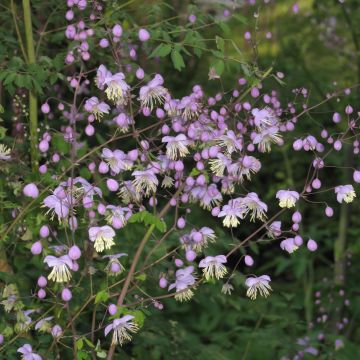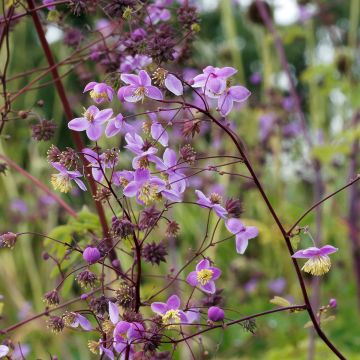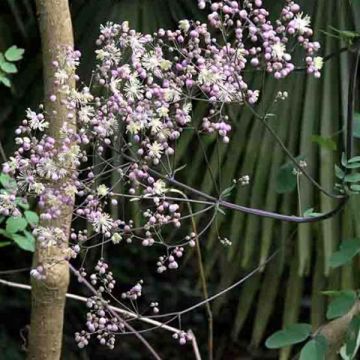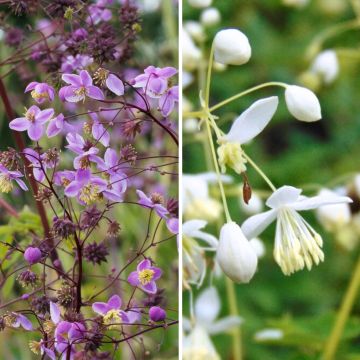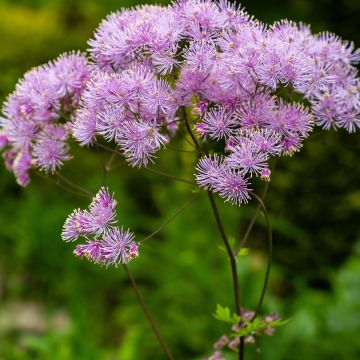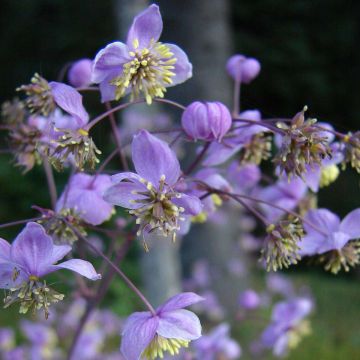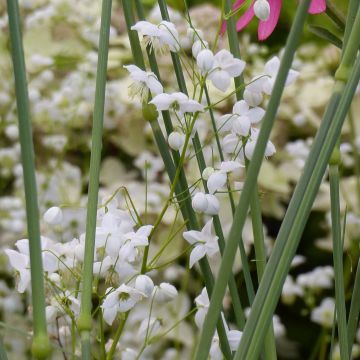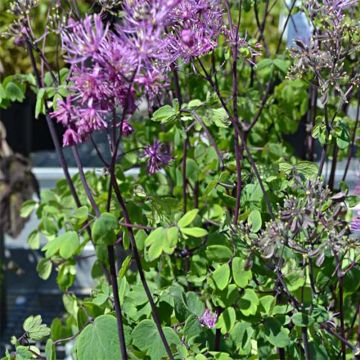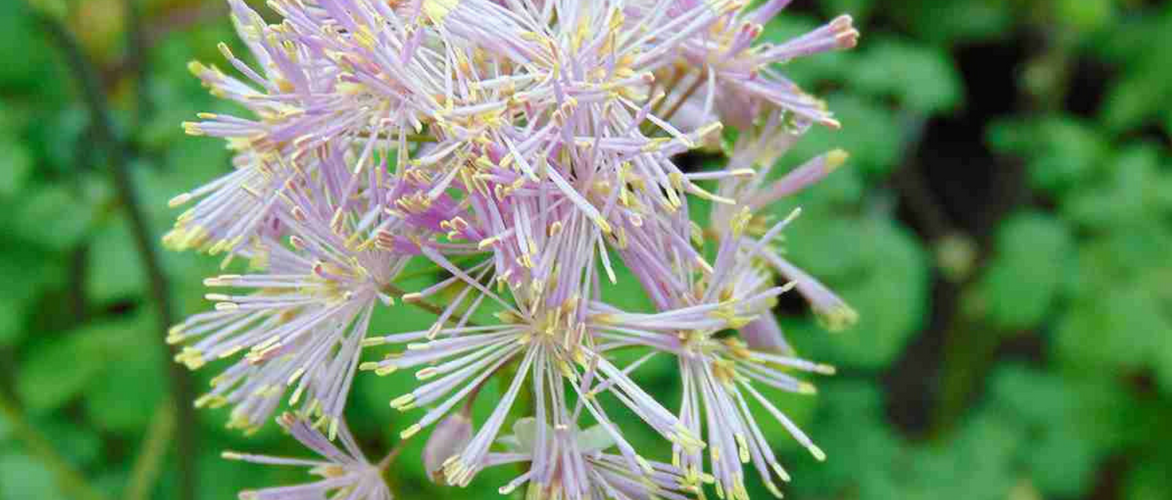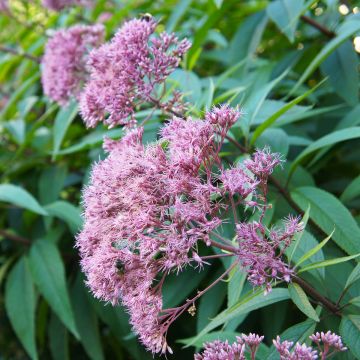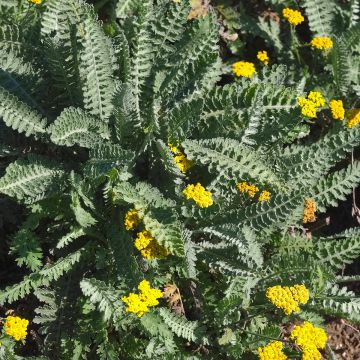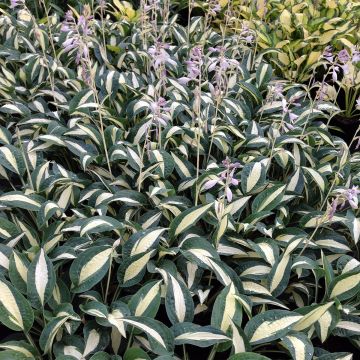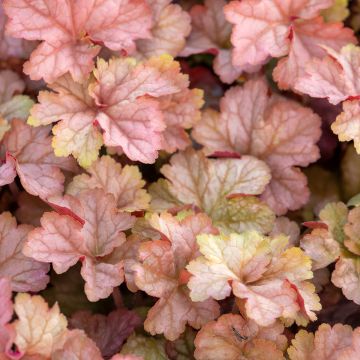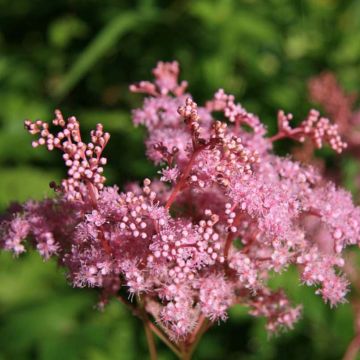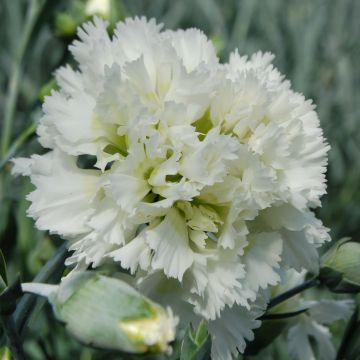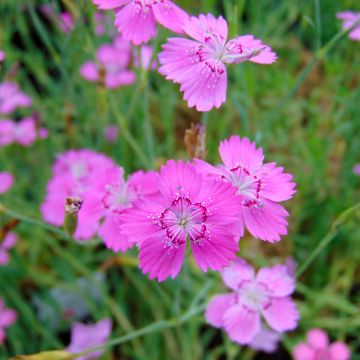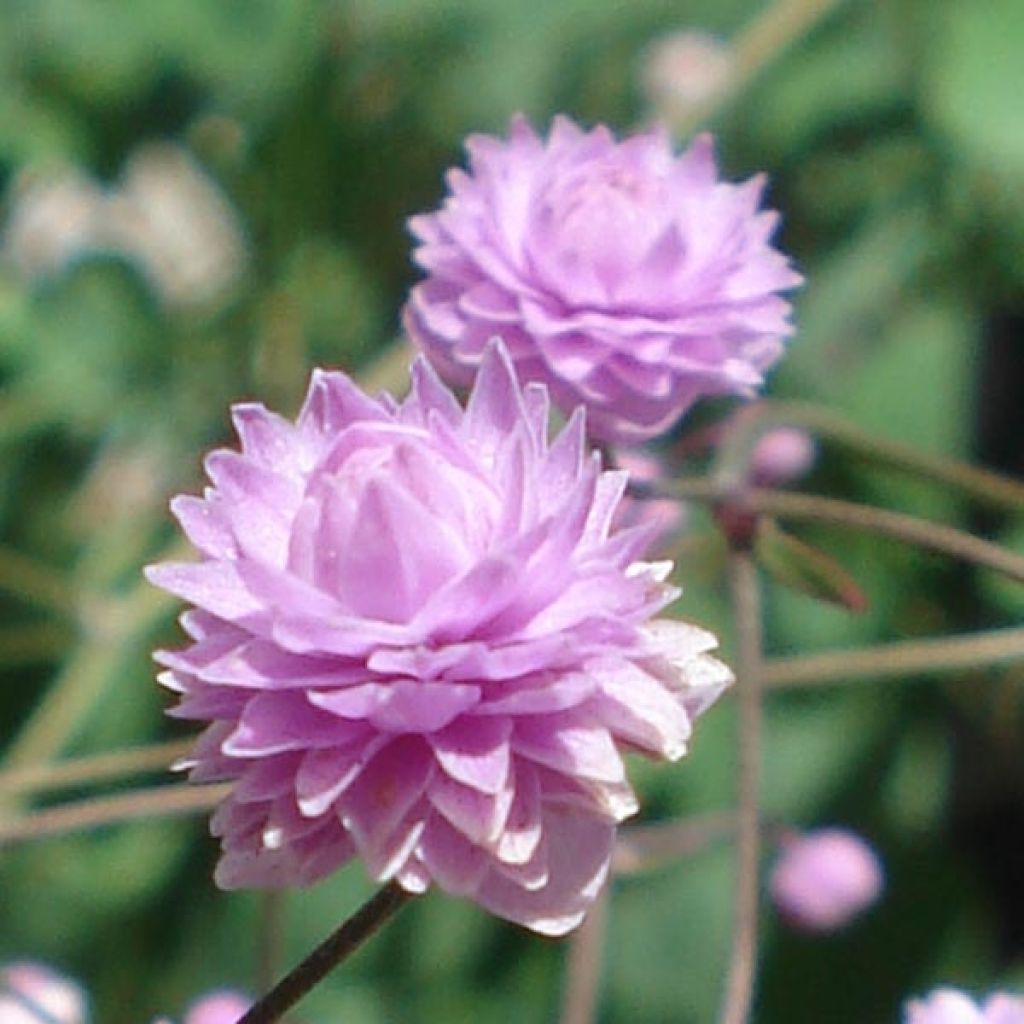

Thalictrum delavayi Hewitts double - Meadow-rue
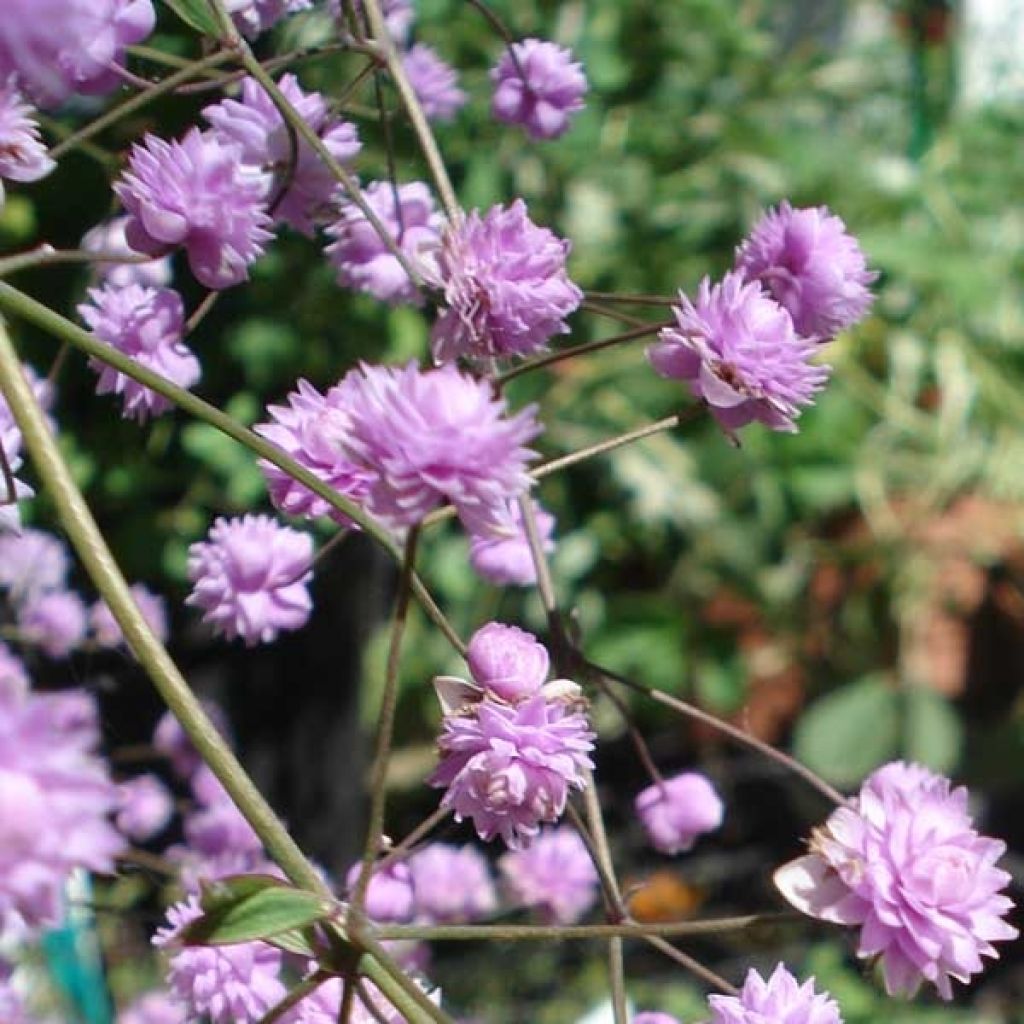

Thalictrum delavayi Hewitts double - Meadow-rue
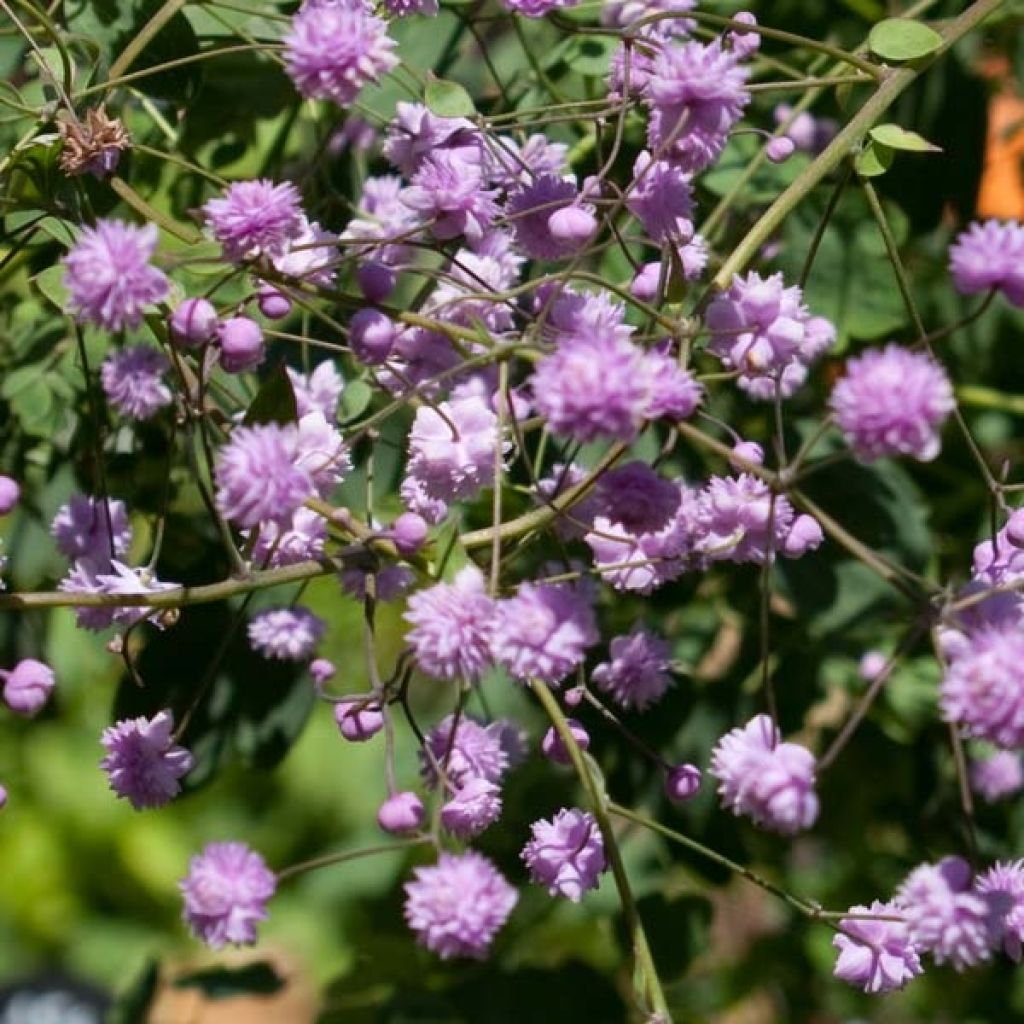

Thalictrum delavayi Hewitts double - Meadow-rue
Thalictrum delavayi Hewitts double - Meadow-rue
Thalictrum delavayi Hewitt's double
Chinese Meadow Rue
Very airy and unique foliage, the flowers are very small with a very pretty hue. Planted in the shade, there were only a few flowering stems (and they lasted quite a long time).
Denise, 29/09/2025
Special offer!
Receive a €20 voucher for any order over €90 (excluding delivery costs, credit notes, and plastic-free options)!
1- Add your favorite plants to your cart.
2- Once you have reached €90, confirm your order (you can even choose the delivery date!).
3- As soon as your order is shipped, you will receive an email containing your voucher code, valid for 3 months (90 days).
Your voucher is unique and can only be used once, for any order with a minimum value of €20, excluding delivery costs.
Can be combined with other current offers, non-divisible and non-refundable.
Home or relay delivery (depending on size and destination)
Schedule delivery date,
and select date in basket
This plant carries a 12 months recovery warranty
More information
We guarantee the quality of our plants for a full growing cycle, and will replace at our expense any plant that fails to recover under normal climatic and planting conditions.

Would this plant suit my garden?
Set up your Plantfit profile →
Description
Thalictrum delavayi 'Hewitt's Double' is a very pretty form of meadow rue with double flowers in a lovely mauve colour. It is a variety of rather modest stature, which is as much appreciated for its finely cut and chiseled bluish-green foliage as for its long summer to autumn flowering in a mist of small flowers as light as those of baby's breath. Truly graceful, this perennial is also a hardy plant that takes some time to establish. It will work beautifully in semi-shaded borders, in moist soil, protected from the wind that can break its thin stems.
Thalictrum 'Hewitt's Double' is a horticultural selection derived from Thalictrum delavayi, also known as Thalictrum dipterocarpum, a rhizomatous perennial plant of the buttercup family. This species is native to the Himalayan region, from eastern Tibet to western China. It is found in the wild at high altitudes, in forests, scrublands, on grassy slopes, not far from watercourses. This variety 'Hewitt's Double' is a clone with double flowers. The above-ground vegetation, which is deciduous, emerges from the ground in spring and dries up in autumn. The plant has an upright and erect habit, forming a bushy clump, from which stems rise, reaching a height of about 1 m (3ft), sometimes 1.20 m (4ft), with a width of 30 to 40 cm (12 to 16in). Its foliage, glaucous green on top, bluish underneath, finely cut and very light, resembles that of a columbine; it is composed of leaves 15 to 35 cm (6 to 14in) long, pinnate or ternate, with entire or trilobed leaflets. From July-August to October, large panicles appear, terminal and axillary, well-branched, filled with numerous small mauve petaloid stamens. This flowering attracts bumblebees, bees, and hoverflies. Not liking the competition of nearby roots, a planting distance of 40 cm (16in) around its base should be respected. Thalictrums, which are rather slow to establish, will become more and more beautiful over time.
Thalictrum delavayi 'Hewitt's Double' provides the same ornamental function as panicled baby's breath, but unlike them, it prefers damp and slightly shaded areas of the garden. With its size, delicate and elegant bluish columbine-like foliage, and airy appearance, it will be perfect for adding height and lightness to borders. Its transparent silhouette allows it to be planted at the front of borders to create a beautiful effect. It will be particularly effective in contrast with less delicate shade perennials (Rodgersia, Hosta), as well as on the edges of shrub borders. It will naturally find its place alongside Hydrangeas, shrub or climbing Roses, Fuchsias, Japanese Anemones, Bearded Irises, Bellflowers, Snowberries, Ferns, Hellebores, Foxgloves, and silver candles.
Thalictrum delavayi Hewitts double - Meadow-rue in pictures
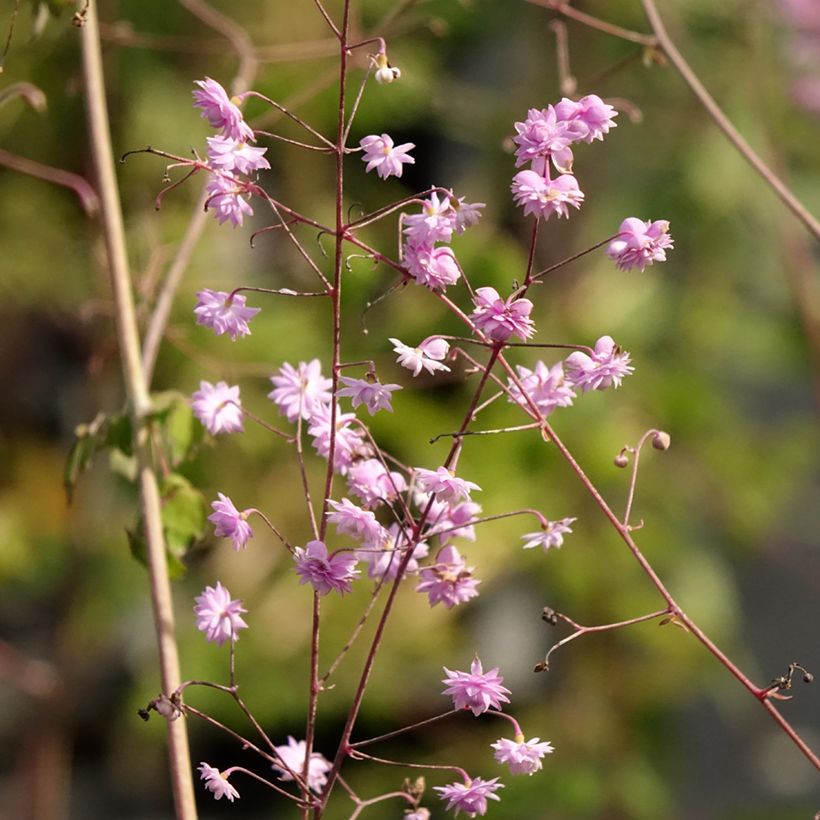

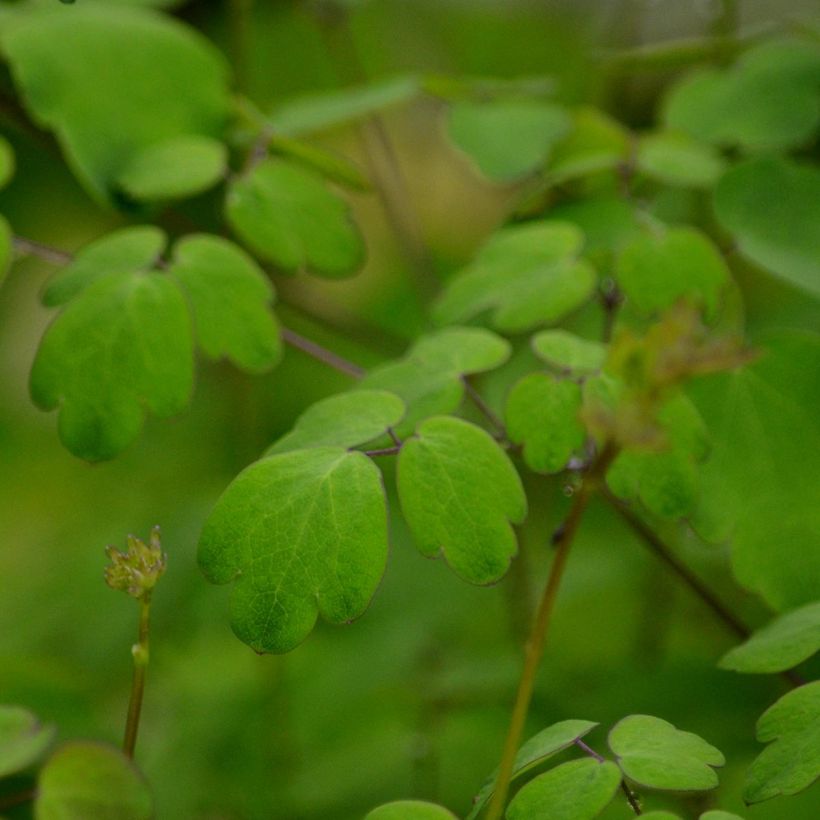

Flowering
Foliage
Plant habit
Botanical data
Thalictrum
delavayi
Hewitt's double
Ranunculaceae
Chinese Meadow Rue
Himalayas
Other Thalictrum - Meadow Rue
View all →Planting and care
Despite its delicate and fragile appearance, Thalictrum delavayi is a hardy and low-maintenance perennial. It simply needs to be planted in partial shade or even full shade, in a moist to wet soil, rich in organic matter and well-drained, without too much limestone. It is possible to establish it in the sun, as long as the soil remains moist and there is ambient humidity around the plant. Planting can be carried out in spring or autumn. Planting at the base of a north or east-facing wall is ideal. Don't hesitate to amend the soil with compost every year to improve winter drainage and facilitate root development. Also, don't forget to water regularly during dry and hot periods. Regularly deadhead the faded flowers to prolong the flowering period. Losing its leaves in autumn and completely disappearing in winter, it will only reappear in spring quite late. Therefore, it is advisable not to cut the plant down in autumn, so as not to forget its location the following spring.
Being a bit slow to establish, it will delight the gardener over the years! Due to its large size, staking may be necessary, especially if this Meadow Rue is used as a standalone plant or in a windy location. To avoid this inconvenience, it is recommended to plant it in the midst of other plants and bushes, against which it can lean. Dividing the clumps is done in March-April, by cutting the clump into several pieces with a spade, but the divisions take a long time to establish. Highly resistant to diseases, it may, however, be susceptible to powdery mildew during periods of drought and to slug attacks when young shoots start to appear.
Planting period
Intended location
Care
Planting & care advice
-
, onOrder confirmed
Reply from on Promesse de fleurs
Similar products
Haven't found what you were looking for?
Hardiness is the lowest winter temperature a plant can endure without suffering serious damage or even dying. However, hardiness is affected by location (a sheltered area, such as a patio), protection (winter cover) and soil type (hardiness is improved by well-drained soil).

Photo Sharing Terms & Conditions
In order to encourage gardeners to interact and share their experiences, Promesse de fleurs offers various media enabling content to be uploaded onto its Site - in particular via the ‘Photo sharing’ module.
The User agrees to refrain from:
- Posting any content that is illegal, prejudicial, insulting, racist, inciteful to hatred, revisionist, contrary to public decency, that infringes on privacy or on the privacy rights of third parties, in particular the publicity rights of persons and goods, intellectual property rights, or the right to privacy.
- Submitting content on behalf of a third party;
- Impersonate the identity of a third party and/or publish any personal information about a third party;
In general, the User undertakes to refrain from any unethical behaviour.
All Content (in particular text, comments, files, images, photos, videos, creative works, etc.), which may be subject to property or intellectual property rights, image or other private rights, shall remain the property of the User, subject to the limited rights granted by the terms of the licence granted by Promesse de fleurs as stated below. Users are at liberty to publish or not to publish such Content on the Site, notably via the ‘Photo Sharing’ facility, and accept that this Content shall be made public and freely accessible, notably on the Internet.
Users further acknowledge, undertake to have ,and guarantee that they hold all necessary rights and permissions to publish such material on the Site, in particular with regard to the legislation in force pertaining to any privacy, property, intellectual property, image, or contractual rights, or rights of any other nature. By publishing such Content on the Site, Users acknowledge accepting full liability as publishers of the Content within the meaning of the law, and grant Promesse de fleurs, free of charge, an inclusive, worldwide licence for the said Content for the entire duration of its publication, including all reproduction, representation, up/downloading, displaying, performing, transmission, and storage rights.
Users also grant permission for their name to be linked to the Content and accept that this link may not always be made available.
By engaging in posting material, Users consent to their Content becoming automatically accessible on the Internet, in particular on other sites and/or blogs and/or web pages of the Promesse de fleurs site, including in particular social pages and the Promesse de fleurs catalogue.
Users may secure the removal of entrusted content free of charge by issuing a simple request via our contact form.
The flowering period indicated on our website applies to countries and regions located in USDA zone 8 (France, the United Kingdom, Ireland, the Netherlands, etc.)
It will vary according to where you live:
- In zones 9 to 10 (Italy, Spain, Greece, etc.), flowering will occur about 2 to 4 weeks earlier.
- In zones 6 to 7 (Germany, Poland, Slovenia, and lower mountainous regions), flowering will be delayed by 2 to 3 weeks.
- In zone 5 (Central Europe, Scandinavia), blooming will be delayed by 3 to 5 weeks.
In temperate climates, pruning of spring-flowering shrubs (forsythia, spireas, etc.) should be done just after flowering.
Pruning of summer-flowering shrubs (Indian Lilac, Perovskia, etc.) can be done in winter or spring.
In cold regions as well as with frost-sensitive plants, avoid pruning too early when severe frosts may still occur.
The planting period indicated on our website applies to countries and regions located in USDA zone 8 (France, United Kingdom, Ireland, Netherlands).
It will vary according to where you live:
- In Mediterranean zones (Marseille, Madrid, Milan, etc.), autumn and winter are the best planting periods.
- In continental zones (Strasbourg, Munich, Vienna, etc.), delay planting by 2 to 3 weeks in spring and bring it forward by 2 to 4 weeks in autumn.
- In mountainous regions (the Alps, Pyrenees, Carpathians, etc.), it is best to plant in late spring (May-June) or late summer (August-September).
The harvesting period indicated on our website applies to countries and regions in USDA zone 8 (France, England, Ireland, the Netherlands).
In colder areas (Scandinavia, Poland, Austria...) fruit and vegetable harvests are likely to be delayed by 3-4 weeks.
In warmer areas (Italy, Spain, Greece, etc.), harvesting will probably take place earlier, depending on weather conditions.
The sowing periods indicated on our website apply to countries and regions within USDA Zone 8 (France, UK, Ireland, Netherlands).
In colder areas (Scandinavia, Poland, Austria...), delay any outdoor sowing by 3-4 weeks, or sow under glass.
In warmer climes (Italy, Spain, Greece, etc.), bring outdoor sowing forward by a few weeks.






























